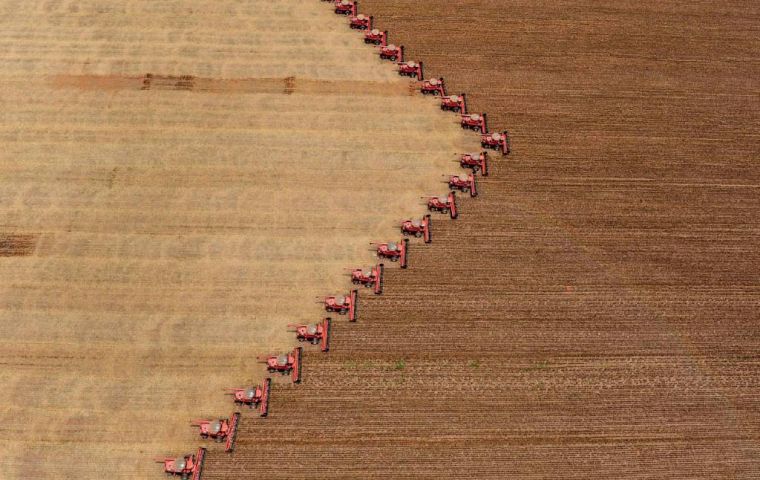MercoPress. South Atlantic News Agency
Brazil forecasted to expand soybean acreage to a new record
 Over the past 12 years the soy area grew on average about 5% annually, with the fastest rate or growth taking place in the 2012/2013 crop year at 10.7%
Over the past 12 years the soy area grew on average about 5% annually, with the fastest rate or growth taking place in the 2012/2013 crop year at 10.7% Brazilian farmers were forecast to expand the country’s soybean planted area for the 12th consecutive year amid strong demand from Asia and in spite of risks related to the exchange rate and higher freight costs. Brazil is likely to expand the area to a record 36.28 million hectares this season, which farmers will start planting around September, a 3.2% expansion from the previous cycle based on government data.
Over the past 12 years the soy area grew on average about 5% annually, with the fastest rate or growth taking place in the 2012/2013 crop year at 10.7%.
“Among factors driving the growth of area, there’s the effect of the trade war between the United States and China, which has supported Brazilian soybean prices in export markets,” said Victor Ikeda, a Rabobank analyst.
The trade tensions led Brazil soybean port premiums to rise as much as US$ 2 per bushel, at the same time an appreciation of the U.S. dollar against the local currency has offset the drop in soybean prices at the Chicago Board of Trade, which fell by around 7% in 2018.
Yet if on the one hand the strong dollar helps farmers in export markets, it impacts the cost of farm inputs which are quoted in foreign currency.
Brazil, the world’s largest soybean exporter, is expected to collect an estimated 119.76 million tons of the oilseeds in the coming season, up 0.65% from previous cycle.
Planting will begin next month, prior to the Brazilian general election, which analysts expect may fuel forex volatility. That, together with higher freight costs, has hampered futures soybean sales.




Top Comments
Disclaimer & comment rulesCommenting for this story is now closed.
If you have a Facebook account, become a fan and comment on our Facebook Page!